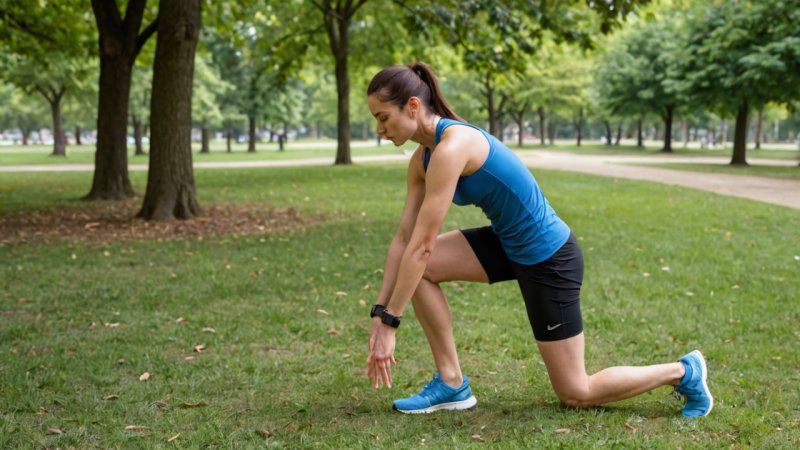Running is a popular and effective means of maintaining fitness and improving cardiovascular health. However, many runners often overlook an essential aspect of their training: mobility work. Integrating mobility exercises into a running routine not only enhances performance but also plays a crucial role in injury prevention. This article will explore the importance of mobility work, effective techniques, and how to seamlessly incorporate it into your regimen for improved overall athletic performance.
Understanding Mobility Work
Mobility work refers to exercises that increase the range of motion around joints while also enhancing the muscle's ability to control and stabilize those movements. Unlike flexibility, which primarily focuses on the length of muscles, mobility emphasizes functional movement patterns that are essential for athletic performance. For runners, improved mobility can lead to a more efficient stride, better posture, and reduced risk of injuries.
Why Mobility is Important for Runners
As runners, our bodies are subjected to repetitive motions that can lead to tightness and imbalances. Incorporating mobility work addresses these issues by:
- Enhancing Performance: Increased range of motion allows runners to utilize their full potential, improving speed and efficiency.
- Preventing Injuries: Tight muscles and joints can lead to compensation patterns that result in injuries. Mobility work helps maintain proper alignment and function.
- Improving Recovery: Mobility exercises can aid in recovery by increasing blood flow to the muscles and promoting better muscular health.
Key Areas of Focus for Mobility Work
When integrating mobility work into a running routine, certain areas of the body should be prioritized for effective results:
Hips
The hips are crucial for running mechanics. Tight hip flexors can restrict hip extension, negatively affecting stride length and power output.
Hamstrings and Quadriceps
Both the hamstrings and quadriceps play significant roles in running. Tightness in these muscle groups can lead to inefficiencies and increased injury risk.
Ankles
Flexible ankles promote better shock absorption and improve the overall biomechanics of running. Limited ankle mobility can lead to compensatory movements that may cause issues in the knees and hips.
Effective Mobility Exercises for Runners
Here are some effective mobility exercises that can be easily incorporated into your running routine:
1. Hip Flexor Stretch
This exercise helps alleviate tightness in the hip flexors:
- Start in a kneeling position with one knee on the ground and the other foot in front, forming a 90-degree angle.
- Gently push your hips forward until you feel a stretch in the hip of the kneeling leg.
- Hold for 20-30 seconds and switch sides.
2. Dynamic Leg Swings
A great way to loosen up the hips and hamstrings before a run:
- Stand next to a wall for support.
- Swing one leg forward and backward, keeping the movement controlled.
- Perform 10-15 swings per leg.
3. Ankle Circles
To enhance ankle mobility, try this exercise:
- Stand on one foot and lift the other foot off the ground.
- Move the elevated foot in a circular motion, making small circles.
- Change directions after 10 circles and switch feet.
4. Deep Squats
Squats are excellent for improving hip and ankle mobility:
- Stand with your feet shoulder-width apart.
- Lower your body into a squat position, keeping your heels on the ground.
- Hold for a few seconds, then return to standing.
Incorporating Mobility Work into Your Routine
Now that you understand the importance of mobility work and some effective exercises, here’s how to incorporate them into your running routine:
Pre-Run Routine
Performing mobility exercises before a run prepares your body for activity. Aim for a 10-15 minute warm-up that includes dynamic stretches and mobility movements targeting the hips, ankles, and legs.
Post-Run Recovery
After your run, take the time to perform static stretches to improve flexibility and promote recovery. Focus on holding stretches for 20-30 seconds to allow the muscles to relax and elongate.
Dedicated Mobility Sessions
Consider setting aside specific days for dedicated mobility sessions. These can be shorter than your typical workout but should focus solely on mobility exercises, lasting 20-30 minutes.
Monitoring Progress and Adjustments
As you incorporate mobility work into your routine, it's essential to monitor your progress. Keep a journal documenting your mobility exercises, how you feel before and after runs, and any improvements in performance. If you notice certain areas still feel tight, consider adding additional mobility work or consulting a physical therapist for personalized guidance.
Conclusion
Integrating mobility work into your running routine is a powerful strategy to enhance performance and reduce injury risk. By focusing on key areas such as hips, ankles, and legs, and incorporating effective exercises, runners can enjoy a more efficient and healthier running experience. Remember that consistency is crucial; make mobility work a regular part of your training, and you will likely notice significant improvements in your running performance.






